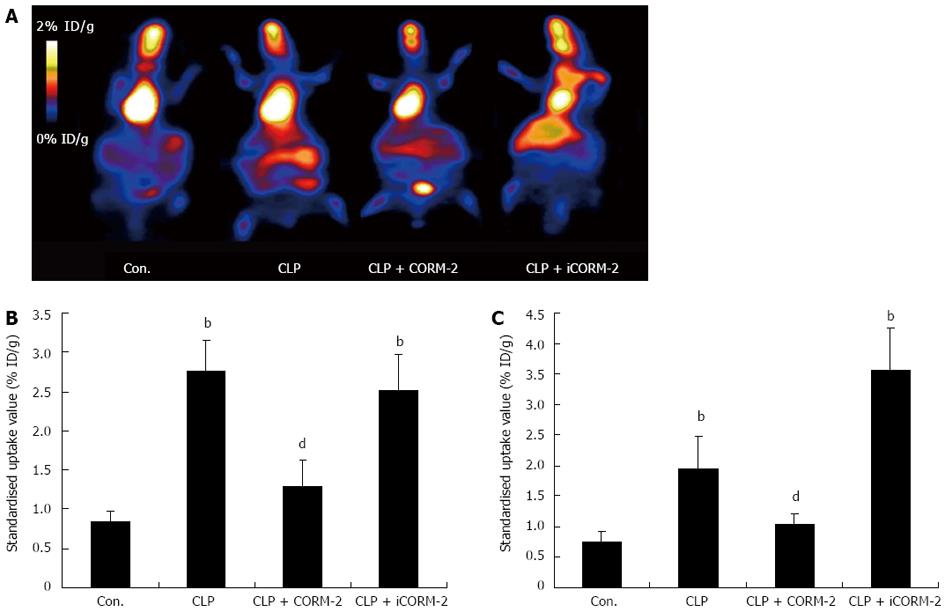Copyright
©2014 Baishideng Publishing Group Co.
World J Gastroenterol. Mar 28, 2014; 20(12): 3301-3311
Published online Mar 28, 2014. doi: 10.3748/wjg.v20.i12.3301
Published online Mar 28, 2014. doi: 10.3748/wjg.v20.i12.3301
Figure 4 Effect of carbon monoxide-releasing molecule II on fludeoxyglucose uptake in the liver of septic mice.
Mice were challenged with cecal ligation and puncture (CLP) and treated with tricarbonyldichlororuthenium (II) dimer (CORM-2) or iCORM-2 as described in the Methods section. 18F-fludeoxyglucose (FDG) was administered by tail vein injection at a dose of 20 μCi followed by micro-positron emission tomography scanning and measurement of 18F-FDG biodistribution. Compared with the normal control group, the CLP group of mice showed significant increases in the level of hepatic glucose metabolism, and these increases were suppressed by CORM-2 intervention. A: Representative images of liver FDG uptake; B: The mean standardized radioactive uptake values in liver tissue; C: Quantification of 18F-FDG biodistribution. bP < 0.01 vs sham mice; dP < 0.01 vs CLP mice.
- Citation: Liang F, Cao J, Qin WT, Wang X, Qiu XF, Sun BW. Regulatory effect and mechanisms of carbon monoxide-releasing molecule II on hepatic energy metabolism in septic mice. World J Gastroenterol 2014; 20(12): 3301-3311
- URL: https://www.wjgnet.com/1007-9327/full/v20/i12/3301.htm
- DOI: https://dx.doi.org/10.3748/wjg.v20.i12.3301









